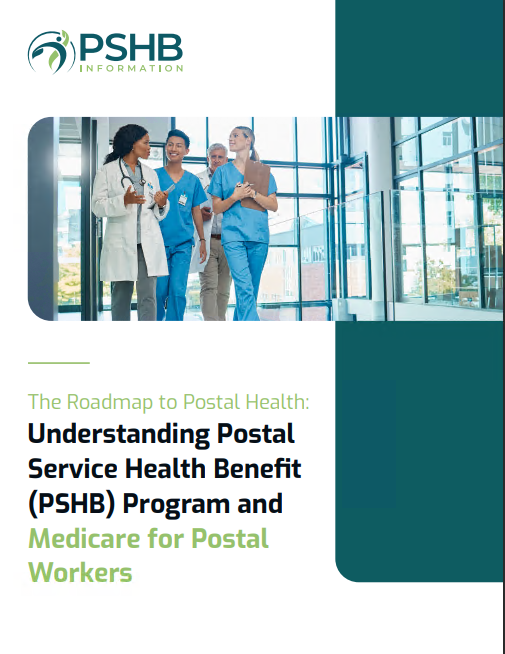Key Takeaways
-
Copayments are an essential feature of health insurance plans, including the Postal Service Health Benefits (PSHB) program, ensuring cost predictability for routine medical care.
-
Understanding how copayments work can help you make informed decisions about using your health insurance benefits effectively.
Breaking Down Copayments in Health Insurance
Health insurance can feel like a maze, but copayments—often called “copays”—offer a clear way to manage your out-of-pocket healthcare costs. In the Postal Service Health Benefits (PSHB) program, copayments play a critical role in keeping medical expenses manageable and predictable. By grasping how these fixed fees function, you can better plan your healthcare spending.
What Are Copayments?
Copayments are set dollar amounts you pay directly to healthcare providers for certain medical services. They apply to routine visits like doctor’s appointments, prescriptions, or urgent care. Unlike deductibles and coinsurance, copayments don’t depend on the total cost of care; they’re predetermined amounts specified in your plan.
For example, with the PSHB program, you might pay $20 to see a primary care physician or $50 for a specialist. These fixed costs make budgeting for medical care much simpler compared to unpredictable billing scenarios.
The Predictability Factor: Why Copayments Matter
One of the biggest advantages of copayments is their predictability. Knowing upfront how much you’ll owe for services eliminates the anxiety of surprise medical bills. This is particularly beneficial for routine care or recurring treatments.
Predictable Costs, Less Stress
When your PSHB plan outlines specific copayments, you can:
-
Budget for routine appointments.
-
Avoid unexpected expenses.
-
Feel confident seeking care without worrying about high out-of-pocket costs.
Whether you’re heading to a doctor’s office or picking up a prescription, copayments keep things straightforward.
Encouraging Preventive Care
Predictable copayments also encourage preventive care. Regular check-ups and screenings often come with lower copays, incentivizing you to prioritize health maintenance. Over time, this focus on prevention can reduce the need for more expensive treatments.
How Copayments Fit Into the Bigger Picture
Copayments don’t exist in isolation; they’re one part of your overall cost-sharing responsibilities. Understanding how they interact with deductibles, coinsurance, and out-of-pocket maximums is essential.
Copayments vs. Deductibles
A deductible is the amount you must pay out-of-pocket for covered services before your insurance kicks in. For instance, your PSHB plan might include a $500 deductible. In some cases, copayments don’t count toward this amount, so you’ll need to pay both the deductible and the copay for certain services.
Copayments vs. Coinsurance
Coinsurance is a percentage of costs you pay after meeting your deductible. For example, if your plan specifies 20% coinsurance, you’ll owe 20% of the bill, while the insurance covers the rest. Unlike coinsurance, copayments are fixed and not tied to the cost of services.
Out-of-Pocket Maximums
The out-of-pocket maximum is the cap on what you’ll pay for covered services in a year. Once you reach this limit, your plan covers 100% of eligible costs. Copayments typically contribute toward this maximum, offering additional financial protection.
Types of Services and Their Copayments
The PSHB program covers a wide range of services, each with its own copayment structure. Knowing what to expect for different types of care ensures you’re prepared when you need medical attention.
Routine and Preventive Care
For routine visits like annual physicals or screenings, copayments are often minimal or waived entirely. These services are designed to help you stay healthy and catch potential issues early.
Specialist Visits
If you need to see a specialist, copayments are typically higher than for primary care visits. However, the fixed amount still keeps costs manageable.
Emergency and Urgent Care
Urgent care centers and emergency rooms usually have higher copayments to reflect the immediate attention provided. While these costs are higher, they’re still predictable and help you plan for unexpected situations.
Prescription Medications
The PSHB program often categorizes medications into tiers, each with a different copayment level. Generic drugs usually have the lowest copays, while brand-name and specialty medications come with higher costs. This tiered structure encourages cost-effective treatment options.
Making the Most of Copayments in Your PSHB Plan
To get the most value out of your copayments, it’s essential to understand your plan’s specifics and leverage available resources.
Review Your Benefits Summary
Your PSHB plan includes a detailed benefits summary that outlines copayment amounts for various services. Familiarize yourself with these details so you’re not caught off guard when seeking care.
Utilize In-Network Providers
Sticking to in-network providers ensures you’ll pay the lowest possible copayments. Out-of-network care often comes with higher costs, so check your plan’s network directory before scheduling appointments.
Plan for High-Cost Services
If you anticipate needing higher-cost services like specialist care or advanced diagnostics, budget accordingly. Knowing your copayments in advance helps you allocate funds for these expenses.
Take Advantage of Preventive Care
Since preventive care often has little to no copayment, prioritize these appointments to maintain your health and avoid costly treatments down the road.
Common Questions About Copayments
Navigating copayments can sometimes be confusing. Here are answers to common questions to clarify how they work in the PSHB program.
Do Copayments Count Toward My Deductible?
It depends on your plan. Some copayments contribute toward your deductible, while others do not. Check your benefits summary for details.
What Happens if I Miss a Copayment?
If you don’t pay a copayment at the time of service, your provider may bill you later. It’s important to stay on top of these payments to avoid complications.
Are Copayments Refundable?
In rare cases, such as billing errors, you might receive a refund for overpaid copayments. Always review your medical bills for accuracy.
Staying Ahead With Your PSHB Plan
Understanding copayments is key to making the most of your Postal Service Health Benefits plan. By familiarizing yourself with your plan’s structure and taking a proactive approach, you can keep healthcare costs predictable and stress-free.
Your Health, Your Control
When you know what to expect, you’re in control of your healthcare journey. From routine visits to urgent needs, copayments provide a foundation of predictability in an otherwise complex system. Use this knowledge to maximize the benefits of your PSHB coverage.












